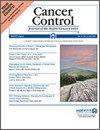Delineation of the “Oropharyngeal Mucosa” and Limiting its Dose in Head and Neck Cancer Patients Spares the Oropharynx Without Compromising Target Coverage
IF 2.5
4区 医学
Q3 ONCOLOGY
引用次数: 0
Abstract
ObjectivesRadiation-induced oropharyngeal injury is a dose-limiting toxicity in head and neck cancer patients. Delineation of the “oropharyngeal mucosa” and limiting its dose to spare the oropharynx was investigated.MethodsIn this retrospective study, computed tomography imaging from eight patients with previously untreated head and neck cancer was employed. An adaptive contouring brush within the planning software Monaco was used to create an air cavity within the oropharynx, and then the air cavity was expanded uniformly 2 mm to create the “oropharyngeal mucosa”. Three plans were independently generated for each patient: Plan1: dose constraint was applied for the oropharynx; Plan2: dose constraints were applied for the oropharynx and the “oropharyngeal mucosa”; Plan3: dose constraint was applied for the “oropharyngeal mucosa”. T-tests were used to compare the dosimetry variables.ResultsAll plans had adequate target coverage and there were no statistical differences among plans. The mean dose, D30%, D45%, D50%, D85%, D90%, D95%, D100%, V25 Gy, V30 Gy, V35 Gy, V40 Gy, and V45 Gy of the oropharynx and “oropharyngeal mucosa” in Plan1 were significantly higher than those in Plan2 and Plan3. There were no significant differences between Plan2 and Plan3. There were no significant differences in the dosimetric parameters of any other organs at risk.ConclusionDelineation of the “oropharyngeal mucosa” and limiting its dose should be an easy and effective method to spare the oropharynx.划定 "口咽部黏膜 "范围并限制其在头颈部癌症患者中的剂量 在不影响目标覆盖范围的情况下保护口咽部
目的放疗引起的口咽损伤是头颈部癌症患者的一种剂量限制性毒性反应。方法在这项回顾性研究中,采用了 8 位既往未经治疗的头颈部癌症患者的计算机断层扫描成像。使用规划软件 Monaco 中的自适应轮廓刷在口咽部创建一个气腔,然后将气腔均匀扩大 2 毫米,以创建 "口咽粘膜"。为每位患者独立生成了三个计划:计划 1:对口咽进行剂量限制;计划 2:对口咽和 "口咽粘膜 "进行剂量限制;计划 3:对 "口咽粘膜 "进行剂量限制。结果所有计划都有足够的目标覆盖范围,各计划之间没有统计学差异。计划1中口咽和 "口咽粘膜 "的平均剂量、D30%、D45%、D50%、D85%、D90%、D95%、D100%、V25 Gy、V30 Gy、V35 Gy、V40 Gy和V45 Gy显著高于计划2和计划3。计划 2 和计划 3 之间没有明显差异。结论对 "口咽部粘膜 "进行划线并限制其剂量应该是一种简便有效的方法,可以避免口咽部受到损伤。
本文章由计算机程序翻译,如有差异,请以英文原文为准。
求助全文
约1分钟内获得全文
求助全文
来源期刊

Cancer Control
ONCOLOGY-
CiteScore
3.80
自引率
0.00%
发文量
148
审稿时长
>12 weeks
期刊介绍:
Cancer Control is a JCR-ranked, peer-reviewed open access journal whose mission is to advance the prevention, detection, diagnosis, treatment, and palliative care of cancer by enabling researchers, doctors, policymakers, and other healthcare professionals to freely share research along the cancer control continuum. Our vision is a world where gold-standard cancer care is the norm, not the exception.
 求助内容:
求助内容: 应助结果提醒方式:
应助结果提醒方式:


